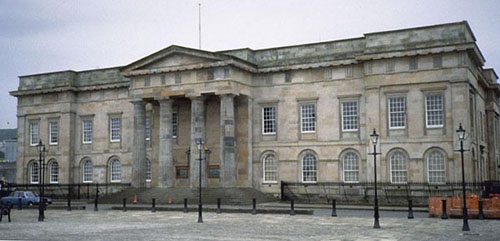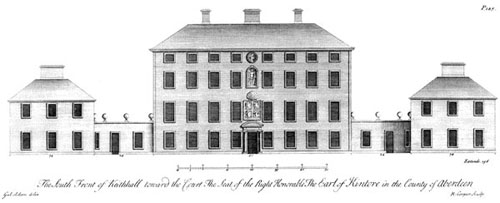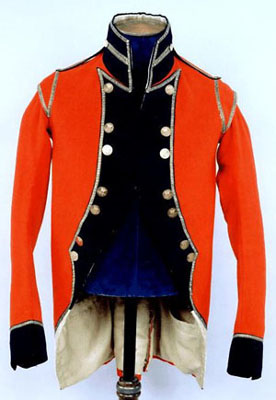The eighteenth century can be characterised by the desire for order, in almost every aspect of life - economic, urban, social and personal.
In economic life order and security was enhanced by the introduction of banking and insurance. The state took direct control over the collection of taxes, and during the century the range of taxes demanded by the government increased.

The Customs House, Greenock, designed by
William Burn, and built in 1818. The expansion of direct state control
of taxation after 1707 led to the construction of purpose-built and imposing
offices such as this.
© SCRAN/Nick Haynes
In architecture, designs were symmetrical and controlled.

Drawing of the
proposed south front of Keith Hall, Aberdeenshire, 1750.
©
SCRAN/University of Strathclyde
By the end of the long eighteenth century
class divisions were more rigid, reinforced by the wide range of churches
and schools available in towns, each with its own client group. The middle
classes lived more private lives, often in a separate part of town. Although
there was still social mobility, particularly in smaller towns, society
in general was becoming more rigid and ordered, a system within which
each individual knew his or her place.
Towns were better organised, run by an increasingly professional middle class. Councils were expected to provide a greater range of public services, and gradually exercised more effective control over town planning.
Social control had traditionally been shared between kirk sessions and town councils. During the long eighteenth century, towns, the state and the growing county organisations increasingly took control of order and law enforcement, providing larger and better prisons, and taking action to restrict vagrants. Fear of social upheaval, following the French Revolution, led to repressive attitudes in politics and justice by the early nineteenth century.
For much of the century soldiers were quartered in towns throughout Scotland.
Many men joined the army and travelled widely, coming home with broader
horizons.
During the Napoleonic Wars local militias and volunteer regiments were established, introducing military service to a wide social group.

Officer's Jacket,
Royal Glasgow Volunteers, 1794.
© SCRAN/National Museums of Scotland
| Next | ||